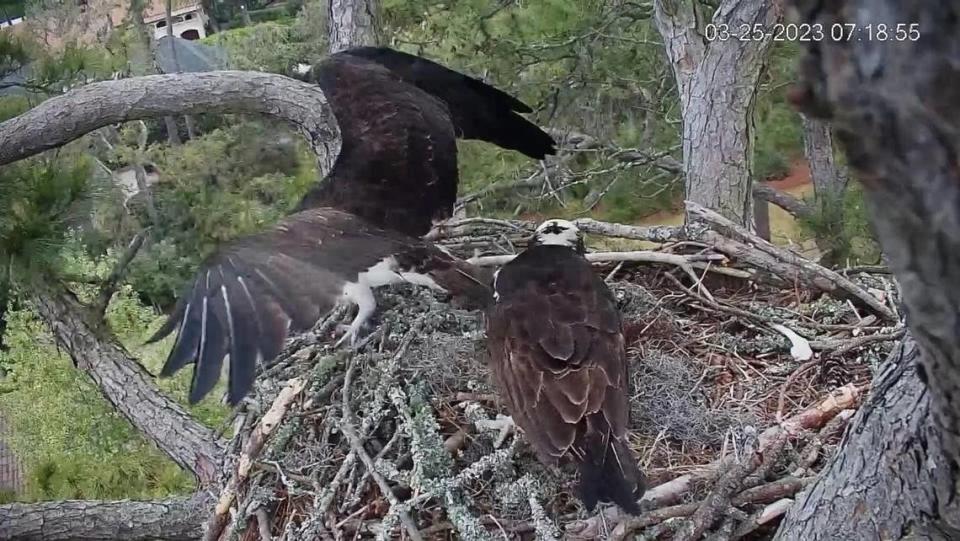Osprey pair swoops into old nest on Hilton Head that was once home to well-known eagles
Perched on the thick branch of a pine tree, a single osprey darted its gaze before taking off into the cool Saturday morning breeze.
Under the branch from whence it flew sat a nest dense with sticks and grasses. It’s what this osprey, along with its mate, has called home since late March. And likely unbeknownst to the pair, their repurposed nest in a pine tree on Hilton Head Island is a special home.
Affixed near the nest is a Raptor CAM, which is run by the Hilton Head Island Land Trust and was previously called Eagle CAM back when the popular bald eagle duo, Harriet and Mitch, ruled the roost. The two haven’t been seen back at the spot since late last year after their two eaglets fell out of the nest due to an avian flu. But when they reigned, over 1 million people tuned in.
From November to early December, people spotted a pair of great horned owls pecking around the nest. By mid-March, two osprey newcomers checked out the lofty new digs. And it looks like they came to stay.
Like great horned owls and bald eagles, taking over an abandoned nest and calling it home is typical. Ospreys often bulk up the reused spot with bark, sod, grasses, sticks and sometimes algae, according to the Land Trust.
It’s all in preparation for a clutch.

Ospreys, predatory birds native to North America’s coastal areas, nest for about 50 days and will lay about two to three eggs in a clutch, the Land Trust said. This typically happens around the end of April, according to Friends of Blackwater National Wildlife Refuge, a nonprofit group. They’ll then incubate the eggs between 36 and 42 days.
The size of a large chicken egg, ranging from white to light brown and tinged with shades of red, brown and gray splotches, the eggs will hatch in the same sequence as the osprey laid them. The chicks will fledge about 55 days after hatching, using the nest as home base until migrating in September, the nonprofit group said.
For people tuned into the Land Trust’s Raptor CAM, this osprey pair’s nesting and incubation period can all be seen live. The Land Trust ensured the CAM doesn’t interfere or intervene with wildlife and is geared up with night vision capabilities.
“While we hope that all eggs hatch and grow to be healthy and successful fledges each season, things like sibling rivalry, predators, illness, natural disasters as well as territorial disputes can affect the wildlife,” the Raptor CAM’s viewer reminder said. “Nature may be difficult to watch.”
In anticipation of a clutch, those enraptured with the osprey pair can leave their mark. The two need names.
On April 15, Land Trust members will dub the duo. Want a say? To submit name recommendations and check in on the newcomers, go to https://www.hhilandtrust.org/raptorcam.

